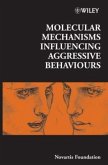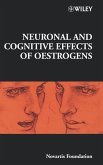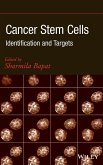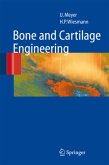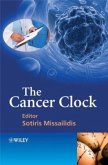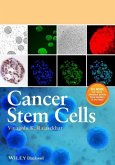Tissue engineering takes advantages of the combined use of cultured living cells and three-dimensional scaffolds to reconstruct adult tissues that are absent or malfunctioning. This book brings together scientists and clinicians working on a variety of approaches for regenerating of damaged or lost cartilage and bone to assess the progress of this dynamic field.
In its early days, tissue engineering was driven by material scientists who designed novel bio-resorbable scaffolds on which to seed cells and grow tissues. This ground-breaking work generated high expectations, but there have been significant stumbling blocks holding back the widespread use of these techniques in the clinic. These challenges, and potential ways of overcoming them, are given thorough coverage in the discussions that follow each chapter.
The key questions addressed in this book include the following. How good must cartilage repair be for it to be worthwhile? What is the best source of cells for tissue engineering of both bone and cartilage? Which are the most effective cell scaffolds? What are the best preclinical models for these technologies? And when it comes to clinical trials, what sort of outcome measures should be used? With contributions from some of the leading experts in this field, this timely publication will prove essential reading for anyone with an interest in the field of tissue engineering.
Contents:
Chair's Introduction (A. Caplan).
Tissue engineering of cartilage: do we need it, can we do it, is it good and can we prove it? (L. Lohmander).
Embryonic development and the principles of tissue engineering (A. Caplan).
The fundamentals of tissue engineering: scaffolds and bioreactors (G. Vunjak-Novakovic).
Tissue-engineered versus native cartilage: linkage between cellular mechano-transduction and biomechanical properties (J. Lee, et al.).
From the preclinical model to the patient (E. Hunziker).
Mesenchymal stem cell therapy in joint disease (F. Barry).
Differentiated chondrocytes for cartilage tissue engineering (J. Huckle, et al.).
Mesenchymal stem cells and bioceramics: strategies to regenerate the skeleton (H. Ohgushi, et al.).
Bone marrow stromal cells and their use in regenerating bone (R. Cancedda, et al.).
Studying the effect of different macrostructures on in vitro cell behaviour and in vivo bone formation using a tissue engineering approach (R. Dekker, et al.).
General discussion I
Cartilage repair with chondrocytes: clinical and cellular aspects (A. Lindahl, et al.).
Qualitative and quantitative in vivo assessment of articular cartilage using magnetic resonance imaging (E. O'Byrne, et al.).
Hyaluronan-based scaffolds (Hyalograft(r) C) in the treatment of knee cartilage defects: preliminary clinical findings (A. Pavesio, et al.).
Quantitative analysis of repair tissue biopsies following chondrocyte implantation (A. Hollander, et al.).
General discussion II: Tissue engineering using recombinant human BMP2.
Final discussion and summing-up.
Index of contributors.
Subject index.
Reviews:
"...I found this book to be an excellent publication for researchers already engaged in the field of tissue engineering". (The Biochemist, 10 July 2003)
In its early days, tissue engineering was driven by material scientists who designed novel bio-resorbable scaffolds on which to seed cells and grow tissues. This ground-breaking work generated high expectations, but there have been significant stumbling blocks holding back the widespread use of these techniques in the clinic. These challenges, and potential ways of overcoming them, are given thorough coverage in the discussions that follow each chapter.
The key questions addressed in this book include the following. How good must cartilage repair be for it to be worthwhile? What is the best source of cells for tissue engineering of both bone and cartilage? Which are the most effective cell scaffolds? What are the best preclinical models for these technologies? And when it comes to clinical trials, what sort of outcome measures should be used? With contributions from some of the leading experts in this field, this timely publication will prove essential reading for anyone with an interest in the field of tissue engineering.
Contents:
Chair's Introduction (A. Caplan).
Tissue engineering of cartilage: do we need it, can we do it, is it good and can we prove it? (L. Lohmander).
Embryonic development and the principles of tissue engineering (A. Caplan).
The fundamentals of tissue engineering: scaffolds and bioreactors (G. Vunjak-Novakovic).
Tissue-engineered versus native cartilage: linkage between cellular mechano-transduction and biomechanical properties (J. Lee, et al.).
From the preclinical model to the patient (E. Hunziker).
Mesenchymal stem cell therapy in joint disease (F. Barry).
Differentiated chondrocytes for cartilage tissue engineering (J. Huckle, et al.).
Mesenchymal stem cells and bioceramics: strategies to regenerate the skeleton (H. Ohgushi, et al.).
Bone marrow stromal cells and their use in regenerating bone (R. Cancedda, et al.).
Studying the effect of different macrostructures on in vitro cell behaviour and in vivo bone formation using a tissue engineering approach (R. Dekker, et al.).
General discussion I
Cartilage repair with chondrocytes: clinical and cellular aspects (A. Lindahl, et al.).
Qualitative and quantitative in vivo assessment of articular cartilage using magnetic resonance imaging (E. O'Byrne, et al.).
Hyaluronan-based scaffolds (Hyalograft(r) C) in the treatment of knee cartilage defects: preliminary clinical findings (A. Pavesio, et al.).
Quantitative analysis of repair tissue biopsies following chondrocyte implantation (A. Hollander, et al.).
General discussion II: Tissue engineering using recombinant human BMP2.
Final discussion and summing-up.
Index of contributors.
Subject index.
Reviews:
"...I found this book to be an excellent publication for researchers already engaged in the field of tissue engineering". (The Biochemist, 10 July 2003)
"...I found this book to be an excellent publication for researchers already engaged in the field of tissue engineering". - The Biochemist, 10 July 2003
"...an excellent source of information...provides avaluable insight into the present and future strategies for boneand tissue engineering." ( Annals of Biomedical Engineering ,February 2004)
"...an excellent source of information...providesvaluable insight into the present and future strategies for boneand tissue engineering" ( Annals of Biomedical Engineering ,Issue 32:02)
"...I found this book to be an excellent publication forresearchers already engaged in the field of tissue engineering".( The Biochemist , 10 July 2003)
"...successfully sets about translating bone andcartilage tissue engineering principles into a clinically relevantscience..." (The Newsletter of the British Society ofCell Biology, Summer 2005)
"...an excellent source of information...providesvaluable insight into the present and future strategies for boneand tissue engineering" ( Annals of Biomedical Engineering ,Issue 32:02)
"...I found this book to be an excellent publication forresearchers already engaged in the field of tissue engineering".( The Biochemist , 10 July 2003)
"...successfully sets about translating bone andcartilage tissue engineering principles into a clinically relevantscience..." (The Newsletter of the British Society ofCell Biology, Summer 2005)


